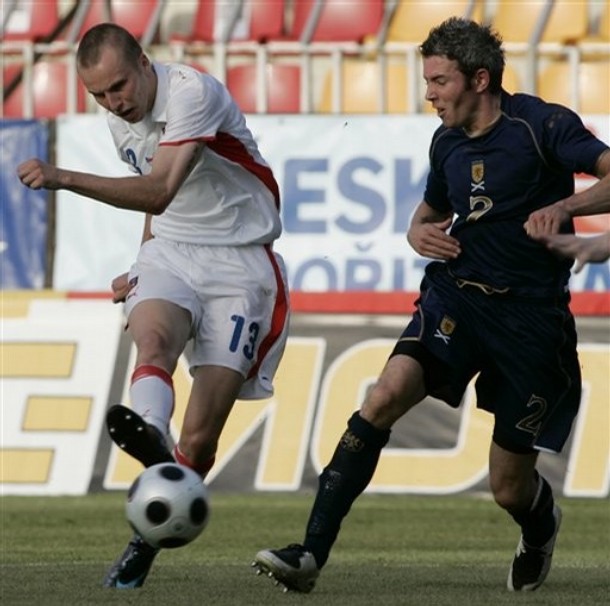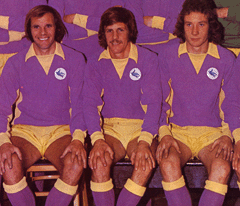 The first thing to be said is that friendly matches usually don’t count for anything, so anything about Wales entering a bold new era based on the back of yesterday’s comprehensive 3-0 win over Scotland at the Cardiff City Stadium carries a danger of being regarded as just hype which might look foolish once the real stuff starts again next September.
The first thing to be said is that friendly matches usually don’t count for anything, so anything about Wales entering a bold new era based on the back of yesterday’s comprehensive 3-0 win over Scotland at the Cardiff City Stadium carries a danger of being regarded as just hype which might look foolish once the real stuff starts again next September.
However, there are a few reasons why yesterday may be a bit more significant than your average International friendly game. Firstly, it was a rare opportunity for two countries within the United Kingdom to face each other and so you would have thought that this would have meant something to the players of both teams to the extent that the game would at least be a bit more competitive than if either side were playing, say, Austria.
The second reason I can think of is that, with players like Edwards, Ramsey, Church and Evans in from the start, Wales had a good sprinkling of the attacking talent that got us so many goals in the qualifying group for the 2009 European Under 21 tournament in their line up. Add in players like Hennessey, Bale, Nayatanga, Ledley, Vokes, King, Allen and Cotterill as well and, almost for the first time, you had a Welsh team that was dominated by a group who had grown up with each other, knew how each other played and didn’t have to tailor their game to fit in with a dominant player like Giggs, Bellamy or Koumas who was meant to be the fulcrum of the sides attacking play.
That is not meant to be a criticism of the three players named or any of the other experienced internationals we have, but sometimes I wonder if their presence has had a stifling affect on youngsters who have proved that they have it within them to play attractive, winning football against the best in Europe in their age group? Last season, the best football I saw from a team I was supporting came from Wales Under 21s in their games with England and some of the stuff played yesterday reminded me of that.
There was an interesting stat shown on the scoreboard at half time yesterday which showed that Wales had only had possession of the ball for 42% of the time in the first forty five minutes, yet they did so much more when they had the ball than their opponents as their sharp, accurate passing tore the Scots apart.
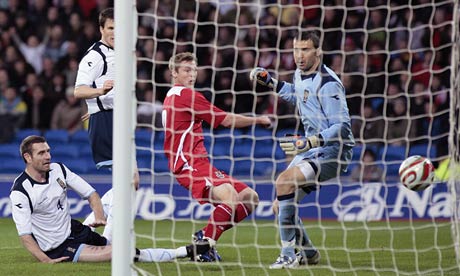 However, this brings us to the crux of the matter – were Wales very good or were they made to look that way by a very poor Scotland team? To be honest, there is plenty of evidence that the latter might be the case – after a promising first few minutes, Scotland did next to nothing with all the possession they had and when Wales upped the pace, they completely fell apart in a manner which strongly suggested that they had little faith in their manager.
However, this brings us to the crux of the matter – were Wales very good or were they made to look that way by a very poor Scotland team? To be honest, there is plenty of evidence that the latter might be the case – after a promising first few minutes, Scotland did next to nothing with all the possession they had and when Wales upped the pace, they completely fell apart in a manner which strongly suggested that they had little faith in their manager.
The marvellous Scottish support which helped to ensure that Cardiff City Stadium had a decent atmosphere despite a disappointing turn out for it’s first international, deserve much better than what they got yesterday and what they have been getting over the past year or so. Whether all of the blame for the Scot’s woes can be placed at George Burley’s door is a moot point – after all, he doesn’t have a great pool of players to pick when compared with other managers over the past thirty years or so. There were a lot of experienced internationals in that team yesterday though and I can’t help thinking that, rather like Steve McLaren, George Burley is someone who is a proven decent to good club manager but doesn’t have it in him to succeed at the next level up.
Even if Scotland were that bad though, I don’t believe that can entirely explain away why Wales looked so much more confident and classy. As mentioned earlier, the team had a nucleus of players who know they can play good quality football together and, although it’s, obviously, going to be harder for them to do that at senior level, I see no reason why they won’t be able to ensure that the Welsh team will carry far more of a goal threat over the next few seasons than they have done in the past year or so.
There were good performances right through the Welsh team yesterday. Starting up front, Church and Evans caused the Scots lots of problems with their movement, while, on a difficult day, Dave Edwards’ first touch was far more assured than it has been at times in the past and there are definite signs that he is benefiting from regular first team football at Premiership level. Ashley Williams looked a natural in the holding midfield role, at the back, Sam Ricketts showed why he has to be regarded now as an established Premiership player and, despite Wales’ dominance, Wayne Hennessey had ample opportunity to show why he is so highly rated.
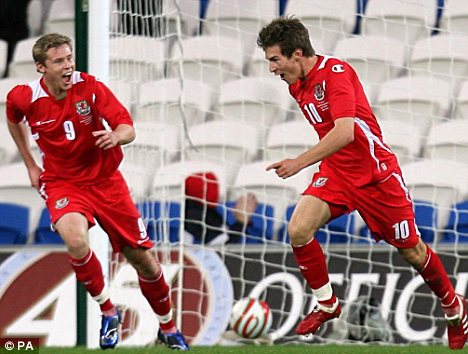 It’s got to be admitted though the reason why this Welsh display might just be the first sign of an exciting new era for the senior side was the performance of Aaron Ramsey. Virtually all of the best players I have seen in my life had an innate ability that made them look like they were playing the game in some sort of bubble which somehow kept them separate from the hoards charging about hither and tither outside. Inside that bubble the player had complete control of the ball and played at his own pace – Ramsey was in that bubble for the hour or so he played yesterday.
It’s got to be admitted though the reason why this Welsh display might just be the first sign of an exciting new era for the senior side was the performance of Aaron Ramsey. Virtually all of the best players I have seen in my life had an innate ability that made them look like they were playing the game in some sort of bubble which somehow kept them separate from the hoards charging about hither and tither outside. Inside that bubble the player had complete control of the ball and played at his own pace – Ramsey was in that bubble for the hour or so he played yesterday.
To get an idea of how good Ramsey is when he is “in the bubble”, I’ll mention two names. Firstly, there’s Darren Fletcher, who the pundits say is now Manchester United’s most important player. Fletcher is the man that Sir Alex Ferguson always selects for the big matches – Ramsey made Fletcher look like a lower division journeyman at times yesterday, Then there is Lee Cattermole who got a big money move from Wigan to Sunderland in the summer and is often cited as one of the main reasons for the Wearsider’s better results this season. Cattermole is sometimes mentioned as a possible target for the big four and is very highly thought of as a holding midfielder and yet, when he played for England Under 21s against Wales last year, he found Ramsey far too hot to handle and was withdrawn from the fray for tactical reasons after just thirty minutes!
Increasingly, good quality Premiership footballers are finding it hard to live with Ramsey and I find myself wondering if City fans saw the best British prospect in his age group playing for their club in the 2007/08 season? When you look at the age group that has been emerging into first team contention over the past year or so, I hear the name of sixteen year old Connor Wickham of Ipswich being mentioned a lot and seventeen year old Jack Wilshire is a much hyped young talent, but, for me, the only real rival Ramsey has at this stage is Jack Rodwell of Everton who, at three months the younger, looks an outstanding talent – I’ll still opt for the young man who lit up Cardiff City Stadium yesterday though.
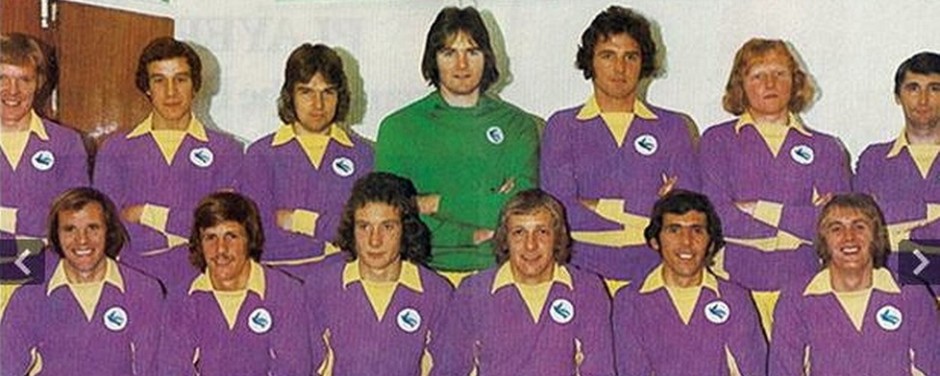
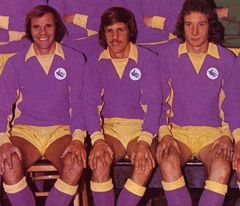
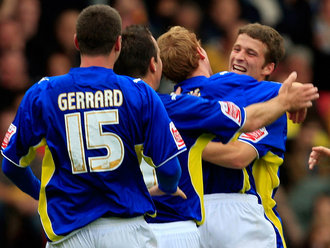 I got stick off some for including Aaron Ramsey in my top ten of central midfielders when he had played so few matches for us, but my reckoning is that if someone comes into the team and starts doing good things on the ball that you aren’t used to seeing from City players playing in that position, then why not give them recognition for that? Much the same applies to Adam Matthews. I did consider including Chris Gunter (who I rate as more solid defensively than Matthews at the same stage in his career) as a youngster who has made an impact, but, when you saw the part Matthews played in the demolition the left flank of Bristol City and Coventry, it seemed obvious that this was a player destined to play, and prosper, at the top level and there are many above him in this list that I never ever thought that about.
I got stick off some for including Aaron Ramsey in my top ten of central midfielders when he had played so few matches for us, but my reckoning is that if someone comes into the team and starts doing good things on the ball that you aren’t used to seeing from City players playing in that position, then why not give them recognition for that? Much the same applies to Adam Matthews. I did consider including Chris Gunter (who I rate as more solid defensively than Matthews at the same stage in his career) as a youngster who has made an impact, but, when you saw the part Matthews played in the demolition the left flank of Bristol City and Coventry, it seemed obvious that this was a player destined to play, and prosper, at the top level and there are many above him in this list that I never ever thought that about.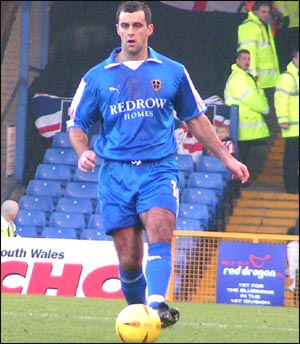 Maybe a bit of a surprise to some and, once Kevin McNaughton had arrived, Dave Jones made it pretty obvious that there was no place for Chris Barker at Ninian Park any more. However, his contribution in our second season at this level in 2004/05 should not be forgotten. We fought a long relegation battle during Lennie Lawrence’s final season with us, but we were always solid defensively – many point at the Gabbidon/Collins partnership as the reason for this and it’s certainly true that they both played a huge part in keeping us up, but it was Chris Barker who picked up the Player of the Season award at the end of the campaign. When City were under real pressure (relegation would have been absolutely disastrous for us given the shambolic state of our finances), Barker produced and the fact, that he is, by all accounts, a thoroughly decent bloke helps his cause as well.
Maybe a bit of a surprise to some and, once Kevin McNaughton had arrived, Dave Jones made it pretty obvious that there was no place for Chris Barker at Ninian Park any more. However, his contribution in our second season at this level in 2004/05 should not be forgotten. We fought a long relegation battle during Lennie Lawrence’s final season with us, but we were always solid defensively – many point at the Gabbidon/Collins partnership as the reason for this and it’s certainly true that they both played a huge part in keeping us up, but it was Chris Barker who picked up the Player of the Season award at the end of the campaign. When City were under real pressure (relegation would have been absolutely disastrous for us given the shambolic state of our finances), Barker produced and the fact, that he is, by all accounts, a thoroughly decent bloke helps his cause as well.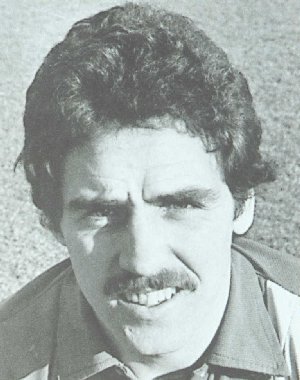 A quality player who definitely improved the team when he arrived from Norwich for £70,000 in February 1979 . I can remember regarding Colin Sullivan’s signing as something of a coup for the club and, in the closing months of the 78/79 campaign when City went on their best run in the old Second Division for nearly a decade, Sullivan played a full part with his decisive defending and willingness to get forward being supplemented with a quality left footed delivery which got him a goal from a free kick against Burnley. Sullivan became a fixture at left back until injury struck half way through the 79/80 season and eventually left to join Portsmouth on a free transfer in March 1982.
A quality player who definitely improved the team when he arrived from Norwich for £70,000 in February 1979 . I can remember regarding Colin Sullivan’s signing as something of a coup for the club and, in the closing months of the 78/79 campaign when City went on their best run in the old Second Division for nearly a decade, Sullivan played a full part with his decisive defending and willingness to get forward being supplemented with a quality left footed delivery which got him a goal from a free kick against Burnley. Sullivan became a fixture at left back until injury struck half way through the 79/80 season and eventually left to join Portsmouth on a free transfer in March 1982. “Solid” – I could leave it at that really when describing Dave Carver, but I won’t. I can remember a game at the Vetch in the Welsh Cup in 1970 when we started counting the number of times Carver whacked the ball over the tiny main stand and
“Solid” – I could leave it at that really when describing Dave Carver, but I won’t. I can remember a game at the Vetch in the Welsh Cup in 1970 when we started counting the number of times Carver whacked the ball over the tiny main stand and
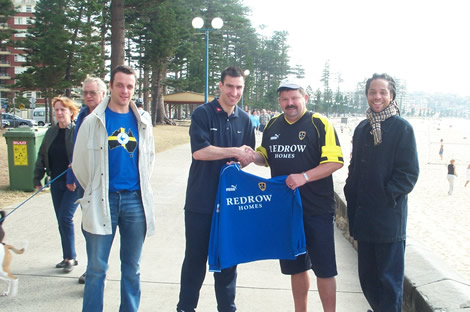 I used to love watching Tony Vidmar play for us. For some reason, I had Vidmar down as a clogger when he was at Rangers, so it was such a pleasant surprise to see that he was in fact a talented. footballing defender who must have been some player when he was at his peak. The football City played on their return to this level during the first half of the 2003/04 season was right up there amongst the best I have seen from us and Vidmar’s poise and class featured prominently during this time. Like so many others, he was not as effective in our second season in the Championship and he left to join NAC Breda in 2005 before a heart problem looked to have ended his career in 2006 – happily though he was able to start playing again in his native Australia before finally hanging his boots up last year at the age of 38.
I used to love watching Tony Vidmar play for us. For some reason, I had Vidmar down as a clogger when he was at Rangers, so it was such a pleasant surprise to see that he was in fact a talented. footballing defender who must have been some player when he was at his peak. The football City played on their return to this level during the first half of the 2003/04 season was right up there amongst the best I have seen from us and Vidmar’s poise and class featured prominently during this time. Like so many others, he was not as effective in our second season in the Championship and he left to join NAC Breda in 2005 before a heart problem looked to have ended his career in 2006 – happily though he was able to start playing again in his native Australia before finally hanging his boots up last year at the age of 38.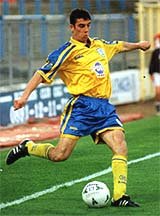 Given that there are a lot of players to choose from who did the business for us week in, week out at Championship/Second Division level, it has to follow that anyone who was with us during our time in the lower two divisions would have to be absolutely outstanding to merit inclusion – Mark Delaney was just that. People remember that goal against Chester (which, unfortunately, I couldn’t find on You Tube for inclusion on here!), but Delaney did the same sort of thing to defences in the basement every week and I don’t think it is a coincidence that we went from a side who were scoring three or four goals every time in winning home games to a team who couldn’t buy a win at Ninian Park after he left us early in 1999. Delaney took to Premiership football like a duck to water, but his career was blighted by serious injury problems and when they eventually forced his retirement in 2007, you couldn’t help thinking that he could have been so much better if it hadn’t been for those dodgy knees of his.
Given that there are a lot of players to choose from who did the business for us week in, week out at Championship/Second Division level, it has to follow that anyone who was with us during our time in the lower two divisions would have to be absolutely outstanding to merit inclusion – Mark Delaney was just that. People remember that goal against Chester (which, unfortunately, I couldn’t find on You Tube for inclusion on here!), but Delaney did the same sort of thing to defences in the basement every week and I don’t think it is a coincidence that we went from a side who were scoring three or four goals every time in winning home games to a team who couldn’t buy a win at Ninian Park after he left us early in 1999. Delaney took to Premiership football like a duck to water, but his career was blighted by serious injury problems and when they eventually forced his retirement in 2007, you couldn’t help thinking that he could have been so much better if it hadn’t been for those dodgy knees of his. Signed from Lower Gornal Athletic in 1966, Gary Bell was soon converted into a left back by Jimmy Scoular and, despite a horrible debut in a 7-1 defeat at Plymouth, he made the number three shirt virtually his own over a five season period beginning in 68/69. Bell was a skilful and combative defender who also contributed much to City’s play going forward with the striking partnership of Toshack and Clark prospering from the sort of quality crossing you would expect from an ex winger. For a while, Bell’s name was being mentioned as a candidate for the full England team and you certainly got the feeling that he could get by in the top flight. However, as the team declined from 1971 onwards, so did Bell and in his latter years with us the thing I remember him most for is his headed penalty against Hull!
Signed from Lower Gornal Athletic in 1966, Gary Bell was soon converted into a left back by Jimmy Scoular and, despite a horrible debut in a 7-1 defeat at Plymouth, he made the number three shirt virtually his own over a five season period beginning in 68/69. Bell was a skilful and combative defender who also contributed much to City’s play going forward with the striking partnership of Toshack and Clark prospering from the sort of quality crossing you would expect from an ex winger. For a while, Bell’s name was being mentioned as a candidate for the full England team and you certainly got the feeling that he could get by in the top flight. However, as the team declined from 1971 onwards, so did Bell and in his latter years with us the thing I remember him most for is his headed penalty against Hull!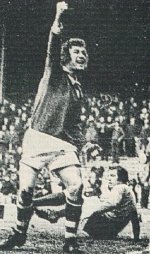 I suppose there will be those who say that, given his versatility, Phil Dwyer shouldn’t really be included in this list, but, for me, he was always first and foremost a full back. Having got that out of the way, I am sure there will be others who say that, if you are regarding him as a full back, then shouldn’t he be your number one choice? As I see it, the problem with that argument is that Dwyer spent nearly all of his career with us playing in sides which were average at best and so he never got to play in a team challenging at the top of this division. As a ferocious tackler and intimidating opponent, Dwyer ticked the right boxes as a defender and, if he wasn’t in the same class as an attacking full back as some of the others who appear here, he made up for that with his aerial threat from free kicks and corners. I don’t think anyone would claim that Dwyer was the most skilful of players, but the fact that he was able to do a decent job for club and country in other positions says that there was more to his game than just being a hard man.
I suppose there will be those who say that, given his versatility, Phil Dwyer shouldn’t really be included in this list, but, for me, he was always first and foremost a full back. Having got that out of the way, I am sure there will be others who say that, if you are regarding him as a full back, then shouldn’t he be your number one choice? As I see it, the problem with that argument is that Dwyer spent nearly all of his career with us playing in sides which were average at best and so he never got to play in a team challenging at the top of this division. As a ferocious tackler and intimidating opponent, Dwyer ticked the right boxes as a defender and, if he wasn’t in the same class as an attacking full back as some of the others who appear here, he made up for that with his aerial threat from free kicks and corners. I don’t think anyone would claim that Dwyer was the most skilful of players, but the fact that he was able to do a decent job for club and country in other positions says that there was more to his game than just being a hard man.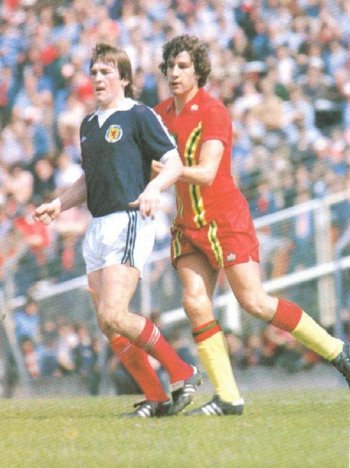
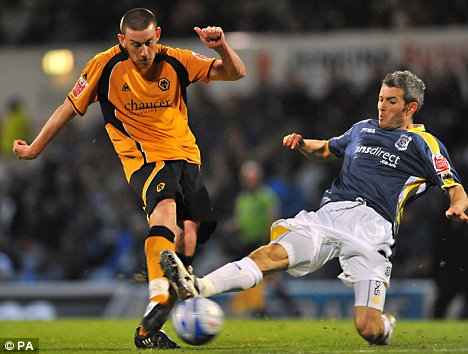 The theory that you only get to realise how good someone is when they are missing from the team is given further credence when you look at how we have been defending in Kevin McNaughton’s absence. In his early months with us City played some tremendous football and, certainly, in his first few matches in a blue shirt, I thought McNaughton stood out as the best player in a very good team. The fact that I still can’t make up my mind whether he is better as a right sided or left sided defender says so much about his reliability and consistency as well as the qualities he brings as a natural defender who knows the full back position inside out (unlike others who have played there in recent years). If his attacking play does not really come up to the high standards he sets in other areas of his game, then I still think it is true to say that, even in the modern game, a full back’s first priority should be defence. In that respect, McNaughton is right up there with the best I have seen in a City shirt and, when you think that he has played to the standard he has in teams that have been challenging for promotion and reaching FA Cup Finals, then I believe he is a worthy number one choice.
The theory that you only get to realise how good someone is when they are missing from the team is given further credence when you look at how we have been defending in Kevin McNaughton’s absence. In his early months with us City played some tremendous football and, certainly, in his first few matches in a blue shirt, I thought McNaughton stood out as the best player in a very good team. The fact that I still can’t make up my mind whether he is better as a right sided or left sided defender says so much about his reliability and consistency as well as the qualities he brings as a natural defender who knows the full back position inside out (unlike others who have played there in recent years). If his attacking play does not really come up to the high standards he sets in other areas of his game, then I still think it is true to say that, even in the modern game, a full back’s first priority should be defence. In that respect, McNaughton is right up there with the best I have seen in a City shirt and, when you think that he has played to the standard he has in teams that have been challenging for promotion and reaching FA Cup Finals, then I believe he is a worthy number one choice.